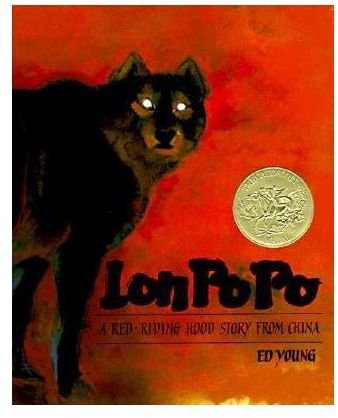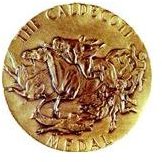Caldecott Medal Lesson Plans for the Elementary Classroom
You’ve seen books marked that they are Caldecott Medal winners; and yes, there is an actual medal. Author and illustrator studies are a
great way to introduce students to a wide variety of literature. However, many teachers ask, “Where do I begin?” Using a book list of Caldecott Medal winners is one suggestion. We have lesson plans which may be used in or out of the classroom for author and illustrator studies or simply to learn more about the award itself. It is best to begin your by explaining to the students just what the Caldecott Award is, and what it means.
What Is the Caldecott Medal Award?
The Caldecott Medal is a bronze award that was designed by American sculptor René Paul Chambellan. It is given to an artist for creating the most outstanding illustrations in an American children’s book for the year. This is different from the Newbery Medal, which is awarded to a children’s book author for excellence in writing. The award was named after Randolph J. Caldecott (1846-1886). Despite the fact that his father tried to discourage Randolph from pursuing a career in art, Caldecott went on to be a well-known artist and children’s book illustrator during the 19th century. Proposed 1937 by Frederic G. Melcher, the first medal was awarded in 1938 to a story entitled Animals of the Bible, by Dorothy Lathrop. The Association for Library Service to Children, which is a division of the American Library Association (ALA), is responsible for administering the award.
The organization has a detailed list of criteria developed to use as parameters for making their selections. With younger students, you may want to merely mention a few of these criteria. For older students, however, these requirements should be discussed in-depth.
You can learn more about the Caldecott Medal and find a list of Caldecott award winners right here on Bright Hub Education.
How to Use the List of Caldecott Winners
Educators may use a list of the Caldecott award winners as a springboard for more in-depth illustrator studies. Simply choose a book

from the list to highlight. Spend time reading the selection aloud, to the class. Or, you can assign the students to read the book on their own if multiple copies are available. Since the Caldecott Medal is awarded for outstanding illustrations, time should be devoted to the discussing the medium(s) used, what the children notice about the illustrations, what they like or dislike and so on. You may wish to consider team-teaching with the school art teacher for this part of the lesson plan. He or she may also be willing to devote a portion of the time in the art classroom to studying the medium(s) used by the various illustrators. Allowing the children to re-produce the style on their own would reach a variety of classroom learning styles.
The next part of the illustrator study is to provide students with copies of other works by the same illustrator. By having the books readily available in the classroom, students are free to explore the literature on their own. If the books are not available, provide a list of other published selections. Students may then go on their own to the library to check out the related literature.
To complete your illustrator study, provide background knowledge about each of the illustrators you are introducing. Devote bulletin board space to display a photo of the illustrator, information about his or her childhood, education, and other published work. Also provide a photo of the book which received the Caldecott Medal award. Display that photo alongside a copy of the Caldecott Medal and a notation as to the year the award was won.
Once they have spent time learning about the Caldecott Medal, students will enjoy completing a Caldecott scavenger hunt. This may be completed together for the younger grades, or individually for students in the older grades of elementary school. Create your own, or use the one offered in the Resource section below.
For younger students, bring your Caldecott Medal lesson plans to a close by allowing them to color a bookmark showing their favorite Caldegott award-winning story. For older students, you may wish to ask that they do the following:
-
Write a letter to the Caldecott Medal committee nominating a book they believe should be considered for an award, along with an explanation why. Be sure to consider the qualifications as laid out by the Caldecott committee.
-
Write a letter to a friend, explaining why he or she should read the story, and why - in their opinion - the book was awarded the Caldecott medal.
Additional Resources
Vicki Blackwell’s Caldecott Scavanger site.
